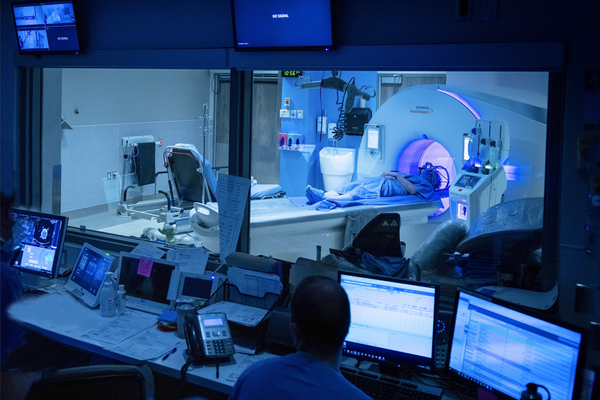Mobile Menu
- Education
- Research
-
Students
- High School Outreach
- Undergraduate & Beyond: Community of Support
- Current Students
- Faculty & Staff
- Alumni
- News & Events
- Giving
- About

Ben Gane and Carolyn Morris

New research focused on prevention and early detection of severe mental illness is receiving funding from the 2018 Miner’s Lamp Award dinner — a partnership between U of T’s Department of Psychiatry and Toronto-based mining company IAMGOLD Corporation.
Researchers will use the funds to investigate potential protein biomarkers linked to schizophrenia, the use of mitochondrial DNA in detecting youth psychosis and whether transcranial stimulation could improve the likelihood of schizophrenia patients sticking to their medication regime.
With one in five Canadians experiencing mental illness in their lifetime — and seven in 10 people encountering their first symptoms between ages 16 and 24, research into the causes of mental illness in young people remains essential.
This year’s Miner’s Lamp Award dinner will be held on March 19th, honouring mental-health advocate Margaret Trudeau and featuring music and stories by Chantal Kreviazuk. Here is a glimpse of the latest projects to receive support:
It can be difficult to predict if a patient will develop schizophrenia or another mood disorder when symptoms first appear, and we currently have no clinical tests that can help
Professors Albert Wong and Fang Liu want to change that. Their research focuses on improving our ability to foresee the development of schizophrenia. An earlier diagnosis would allow doctors to create better, more effective treatment plans.
These researchers previously found that a particular protein complex was present in the brain tissue of schizophrenia patients. Now, they are investigating whether detecting this protein complex in the blood could be a way to diagnose schizophrenia early.
As many as 60 percent of schizophrenia patients stop taking their medication in the first six months, often in relation to not having insight into their own mental state.
Professor Philip Gerretsen is exploring whether a technique known as transcranial direct-current stimulation — a non-invasive method that uses electrodes on the scalp to modulate nervous system activity — could help schizophrenia patients stick to their treatment plans.
A recent study has shown that this stimulation may improve insight into illness among those suffering from schizophrenia. Prof. Gerretsen wants to find out whether that could lead them to continue taking medication.
Mitochondria are a part of the cell that are particularly notable because they have their own DNA, distinct from the genetic code that shapes the rest of the body. There is compelling evidence that mitochondrial genes play a role in both schizophrenia and bipolar disorder.
Professor Vanessa Gonçalves wants to explore that link. Her research will focus on youth diagnosed with major psychoses, and will look for a connection between mitochondrial DNA and several features of psychosis.
Prof. Gonçalves will sequence the mitochondrial DNA of 550 individuals, searching for genes associated with traits such as cognition and responsiveness to medication. DNA tests based on these findings could one day determine if patients are at risk for severe psychosis, or if they will respond well to specific treatments.
Read about previous projects to receive funding through the Miner’s Lamp Innovation Fund

